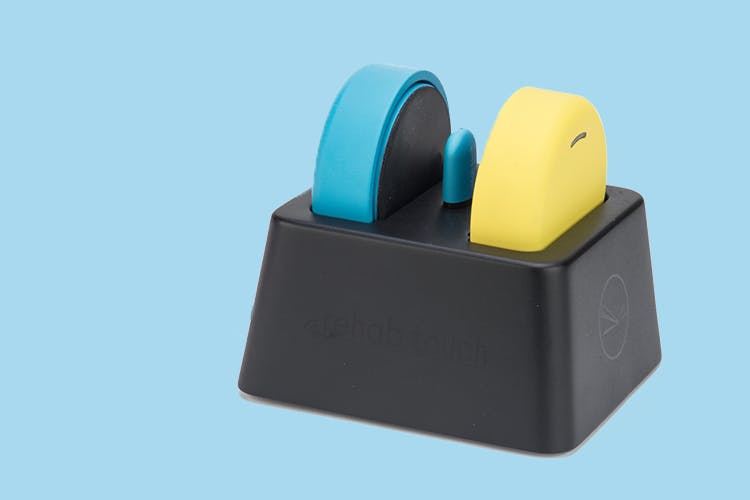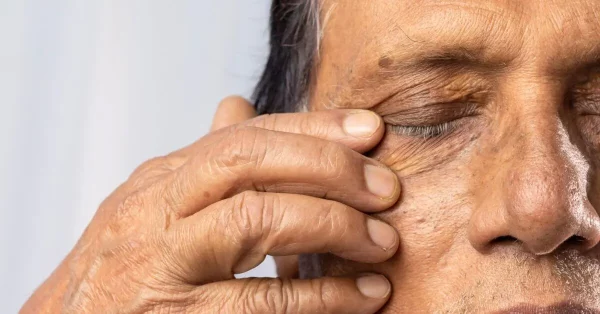If you’re trying to overcome stroke paralysis, we have an inspiring success story to share with you. A stroke survivor named Ron was able to move his arm for the first time ever after just 3 weeks of using FitMi home therapy.
Not many people understand how they can use FitMi to overcome paralysis, and today we’re explaining the steps. Below you’ll discover Ron’s success story and how you can recover from paralysis just like him.
Stroke Survivor Finally Moves His Arm After Grappling with Paralysis
Here is the story of Ron’s recovery as told by his caregiver and wife, Lisa Wilson:
“My husband suffered a stroke caused by a dissecting carotid artery in late May of this year. He lost 40% of his left hemisphere of his brain causing right side paralysis. His speech was slightly impaired but thankfully Drs believe he is a rare left-handed person with speech located in right hemisphere of his brain!
Ron was in ICU for a week, followed by a rehab hospital for five more weeks. He came home and has done outpatient therapy three days a week since.
About three weeks ago I ordered the FitMi and just this past week he moved his arm for the very first time!!! He and I both think the repetitive movement of the arm has given his brain the signal that it’s there and ready to move!!!
He will continue with both the FitMi and his other therapies for as long as it takes to fully recover!!!”

Ron was able to regain movement in his paralyzed arm by using FitMi to accomplish passive exercise.
Passive exercise is key to overcoming stroke paralysis. We’ll explain how to exercise passively next. But first we need to cover a critical concept that makes the whole thing work.
Paralysis Recovery Is All About Healing the Brain
In order to regain movement after neurological injury, you need to reconnect your mind to your muscles. This is possible through neuroplasticity.
Neuroplasticity is your brain’s built-in mechanism for rewiring itself. After a stroke, brain injury, or spinal cord injury, neuroplasticity allows the healthy parts of your brain to take over lost functions, resulting in movement.
The brain responds to stimulation, so the more you practice a skill, the stronger the neural connections become. Neuroplasticity is activated in proportion to how much you practice something.
To regain movement in paralyzed muscles, you need to move those muscles repetitively. This brings up a few questions, like how can you move muscles that are paralyzed? And how much repetition is enough?
Let’s dig into the details.
How to Exercise Paralyzed Muscles
Rehabilitating paralyzed limbs starts with passive exercise.
Passive exercise simply means that you move the paralyzed muscles through the joint’s full range of motion. You can do this by using your non-affected side to assist your affected side. For example, if you’re trying to regain movement in a paralyzed arm, you would move it with your non-affected arm.
Although you aren’t technically initiating the movement by yourself, your brain still receives stimulation which sparks the rewiring process. With enough passive exercise, it is possible to regain some small movements in your paralyzed muscles just like Ron.
The benefit of using tools like FitMi (instead of following along some prescribed exercises) is that FitMi tracks your progress and motivates you to perform more repetitions. On average, FitMi motivates patients to achieve 400+ repetitions per session, which is 12 times more than the average outpatient therapy visit.
The reviews speak for themselves.
Hard Work Leads to Recovery
If you want to regain movement after paralysis, you will need to move your affected muscles through passive rehab exercises repetitively.
The more repetitions you perform, the more your brain will start to rewire itself and reconnect your mind to its muscles. In time, you might see twitches or other early signs of movement coming back. Use that as a green light to keep going.
If you’re interested in trying FitMi, you can learn more about it here »










